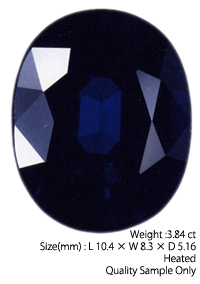 |
Australia
Records show that Australian sapphire was being mined in Inverell, in northeastern New South Wales, by the end of the 19th century. One characteristic of Australian sapphire is that the colors are often not very attractive, such as grayish blue, very dark blue, and greenish blue. Other than some smaller stones with light tone, most Australian sapphire is of accessory quality, with some being sold for even less than $10 per carat. |
|

|
Kanchanaburi
Kanchanaburi is located in western Thailand, toward Myanmar. Kanchanaburi has been producing sapphire for several decades now, but in the past it had not quite been able to compare with Pailin sapphire and the large quantities of geuda material from Sri Lanka. In comparison to the Sri Lankan material, which has a slightly purplish hue that contributes to its attractiveness, sapphire from Kanchanaburi exhibits a very slight grayish hue. With advances in heat treatment techniques, and perhaps due to reduced geuda production, sapphire from Kanchanaburi has taken center stage since the late 1980s. |
 |
Nigeria
Nigerian sapphire showed up in the marketplace around 1988. The quality of this material varies widely. Darker stones resemble Sri Lankan sapphire, with a distinctly purplish hue. The cutters in Bangkok say that the African stones are too black and are inferior to Kanchanaburi material. Since Nigeria is a new source, the quantity and quality of material found from now on will affect the reputation of African sapphires. Fancy sapphires are also found in eastern Africa. |
|
 |
|